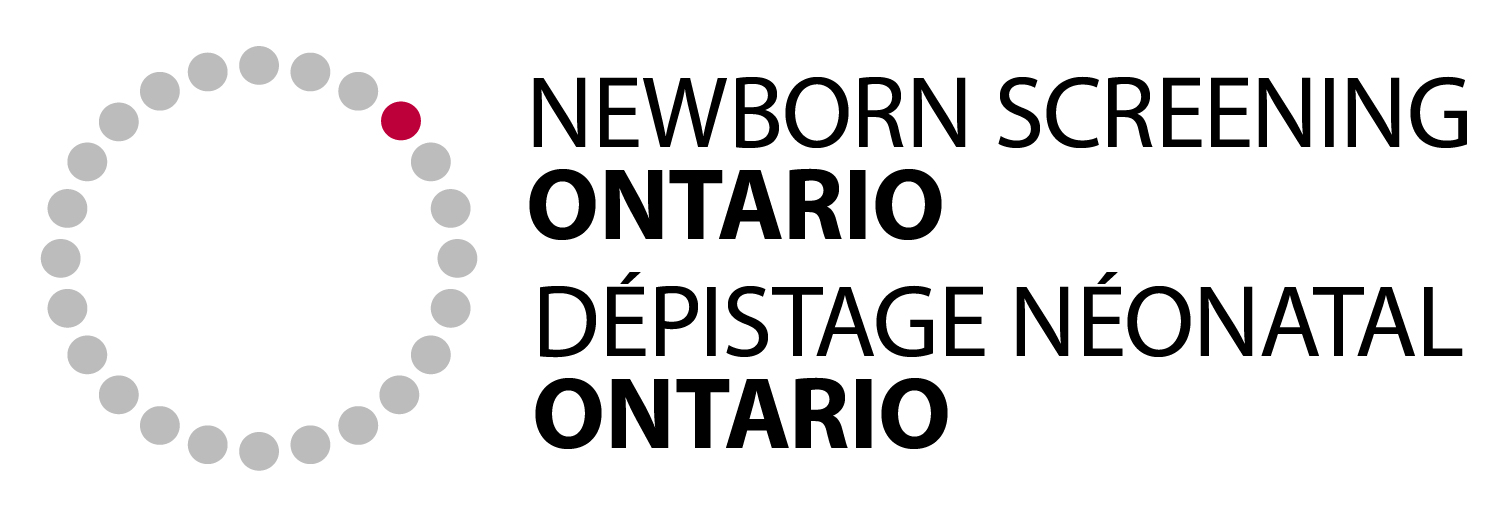- In Ontario, a heel prick is used to take a few drops of blood from each baby shortly after birth. The blood is tested for more than 25 treatable diseases, including homocystinuria.
- A screen positive result means that more tests are needed to know whether or not a baby has homocystinuria. It does not mean that a baby has homocystinuria. Babies identified at a young age through screening can be treated early to help prevent health problems.
Homocystinuria
At a glance
| Approximate incidence in Ontario: | Marker measured: | Screening can prevent: | Treatment: |
| 1 in 200,000-300,000 | Methionine | Developmental delay, lens dislocation, thromboses | Low methionine diet, +/- dietary supplementation |
Homocystinuria is a rare, inherited (genetic) disease.
- Babies with homocystinuria cannot break down methionine.
- Methionine is a building block of protein (also called an amino acid). It is found in many foods, including breast milk and infant formula.
- There are two types of homocystinuria. One that responds well to treatment with Vitamin B6, and one that does not respond.
Screening positive for homocystinuria
- It is normal for parents and guardians to feel worried when their baby has a screen positive result. A ‘screen positive’ result does not mean that a baby has homocystinuria. It means that there is a chance that the baby may have homocystinuria.
- Follow-up testing is important to find out whether the baby truly has homocystinuria.
- The baby’s health care provider or a health care provider at a newborn screening treatment centre will discuss the results with the baby’s family.
- Follow-up testing is arranged as soon as possible and involves blood and urine tests.
- It can take a few days to weeks to find out if a baby truly has homocystinuria or not. This waiting period can be hard for families and it is natural for parents/guardians to feel worried when their baby has a screen positive result.
Possible follow-up test results
- Normal – the baby does not have homocystinuria.
- Abnormal – the baby does have homocystinuria and will need treatment. The family will be supported by a team of caring specialists.
- Inconclusive – more testing is required. The baby will continue to be followed closely by a specialist to ensure that he/she receives optimal care.
Most babies with homocystinuria appear normal at birth.
Early treatment helps to prevent serious and life-threatening health problems such as:
- developmental delay
- heart disease and stroke
- pancreatitis
- Treatment begins as early as possible after a diagnosis is made.
- Treatment involves medication, a special diet that is low in protein (low in methionine), medical formula, and supplements.
- Treatment is lifelong.
- A team, including a metabolic doctor and a dietitian, cares for babies with homocystinuria.
- Babies with homocystinuria have their health and development checked regularly.
- Regular follow-up tests are used to monitor and adjust treatments.
- Children with homocystinuria can be as healthy and intelligent as other children their age if methionine levels are well managed with diet and medication.
- Even with treatment, some children may develop eye problems.
If your baby has screened positive for homocystinuria, click here for more information.
Contact Us
Children’s Hospital of Eastern Ontario
415 Smyth Road
Ottawa, Ontario K1H 8M8
Toll-Free: 1-877-627-8330
Local: (613) 738-3222
Fax: (613) 738-0853
